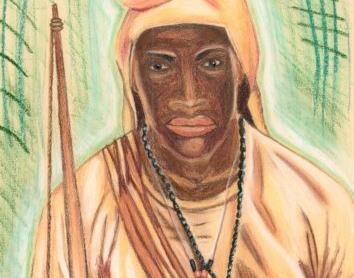The concepts covered in this fact sheet go beyond those seen in high school. It is intended as a supplement for those who are curious to learn more.
Timbuktu is located in Mali, just south of the Sahara, on a loop of the River Niger. This location makes the city the junction between the Sahara desert and the river, between a desert area and a fertile region. This is why Timbuktu has, from the very beginning of its history, been the meeting point of the nomadic peoples of the desert and the sedentary peoples of the Niger River.
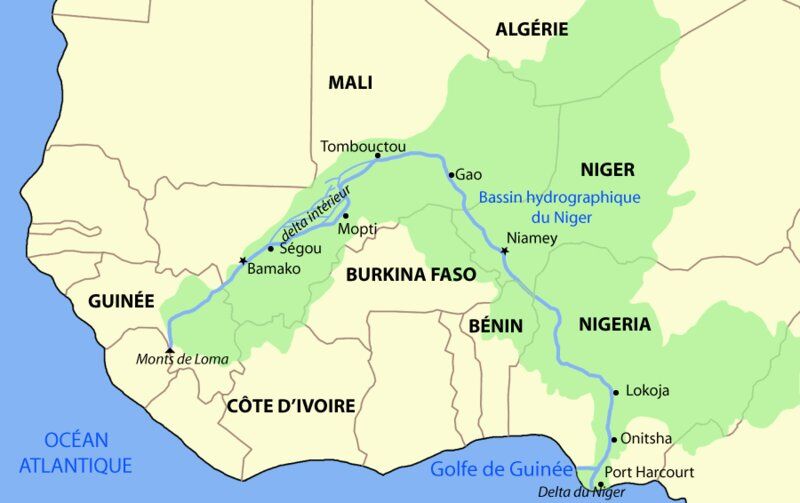
Timbuktu's geographical location.
Note : An image in English is coming soon.
To facilitate trade, several canals also link the city of Timbuktu to the river port of Kabara. Commercial activity in the Timbuktu region has always been strong and prosperous. Several hundred caravans and camels passed through every year.
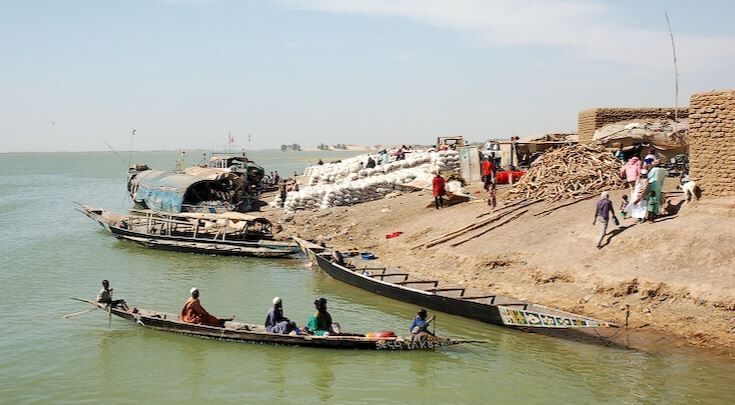
The port of Kabara today.
Formerly known as Timbuktu, Timbuktu was founded by the Tuareg in the late 11th century. At the time, the fledgling town served more as an encampment on the banks of the Niger, since its function was to facilitate trans-Saharan trade. By the 12th century, shortly after its foundation, Timbuktu was already the focal point for all caravanners from North Africa, the Sahara and the region's oases. Timbuktu's prosperity was based primarily on the trade in salt, cloth and gold. The city's burgeoning prosperity was already beginning to attract the elite and scholars. Timbuktu was gradually becoming the heart of intellectual life, thanks in part to the construction of its first mosque.
By the first half of the 15th century, many manuscripts were being imported and copied for scholars' libraries. These same scholars also wrote works to teach what they knew. They wrote works on law, Koranic studies, traditions, theology and the Arabic language.
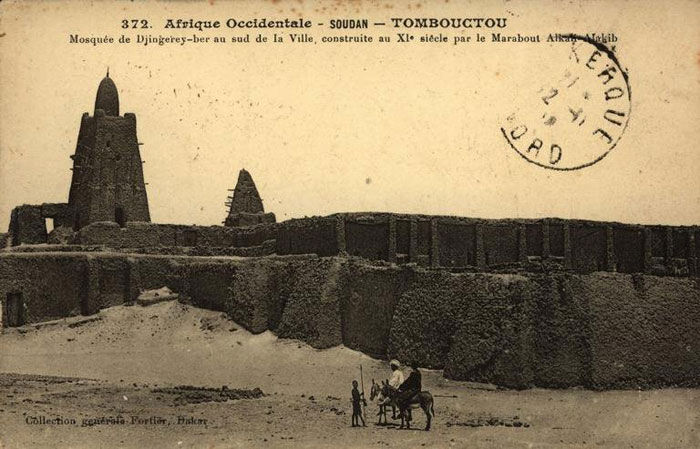
Timbuktu in the Middle Ages, around the 11th century.
Note : An image in English is coming soon.
Little by little, Timbuktu established itself as a cultural and religious metropolis. Around 180 schools were spread throughout the city. Young people attended these schools before choosing a private teacher with whom they continued their learning (such as learning the Koran, reading, writing, translating, etc.) in various fields: theology, astronomy, law, etc.
Timbuktu reached its commercial, cultural, religious and intellectual peak in 1468. It was during this period that Timbuktu's typical architectural style became established: massive walls at the base, tapering upwards, few openings, windows on the upper floors only. In the 15th century, international renown was also attributable to the University of Sankoré. At the time, the city was home to 100,000 inhabitants and some 25,000 students.
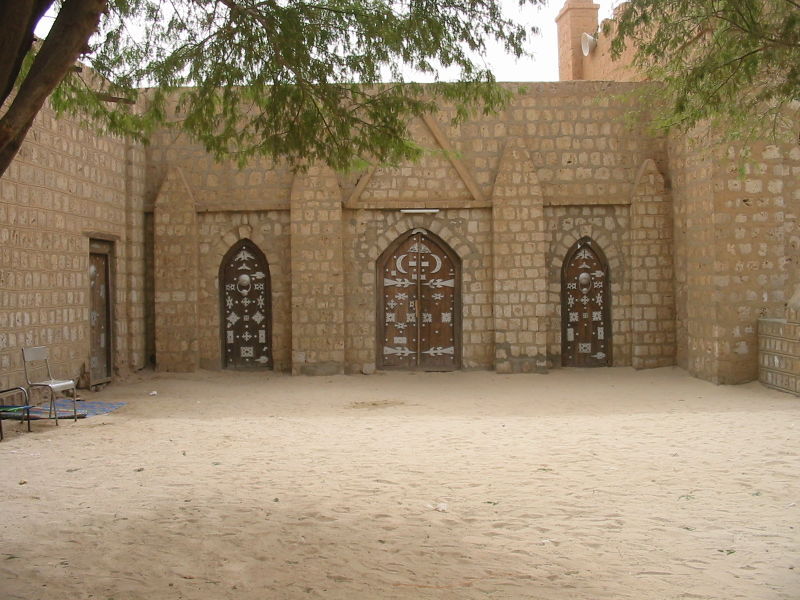
Sankoré University.
Trade activities also reached their peak, thanks to the numerous exchanges that took place in Timbuktu. Indeed, these exchanges involved goods from all over: desert, savannah, forest, North Africa, South Africa, Europe, etc.
From the Maghreb and Sahara, caravaneers brought back salt, spices, silk, copper and tin. From the south came kola nuts, gold, ivory, ostrich feathers and slaves. Craftsmen also contributed to their city's prosperity, making valuable items such as necklaces, weapons, harnesses and gold and silver objects, not forgetting the many manuscripts for which Timbuktu was famous.
With its three great mosques, Timbuktu was the center of the spread of Islam in Africa. All travelers of the time heard of this great capital. Indeed, Leo the African visited Timbuktu in the 16th century. As the city was forbidden to Christians, few Westerners managed to enter. The first report of a visit to Timbuktu came in 1828 from René Caillié, who had managed to get in by posing as an Afghan traveller.
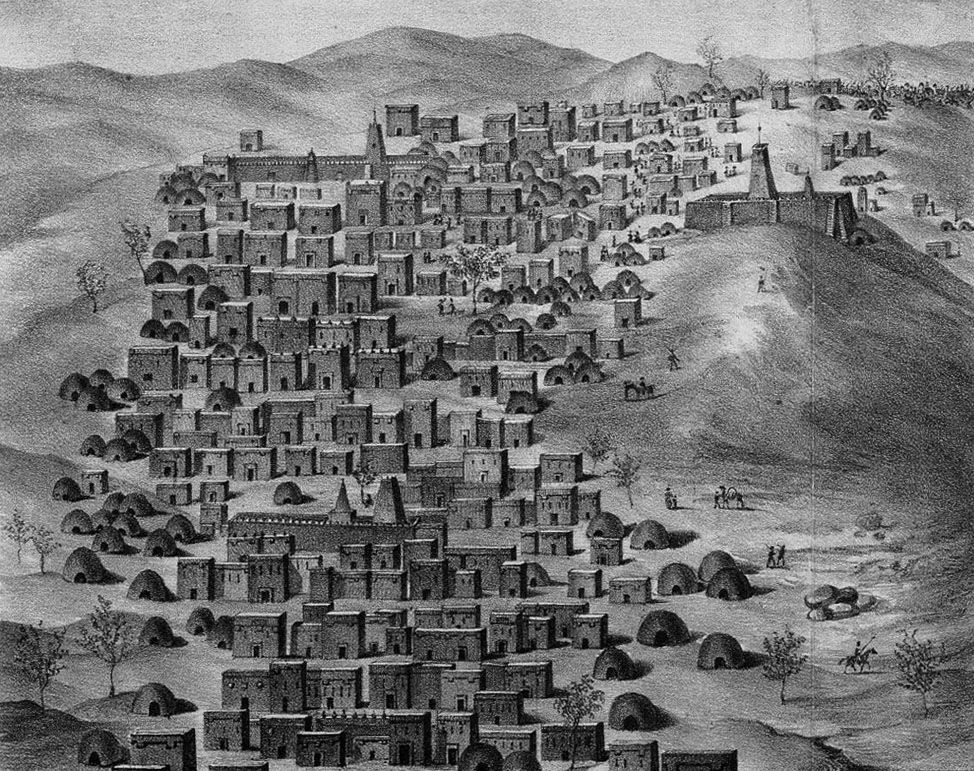
Timbuktu, as seen by René Caillé.
After a series of difficulties in the 17th and 18th centuries, Timbuktu experienced an intellectual renaissance in the 19th century. The tradition of building great libraries was not lost, and continued well into the 20th century. Today's population is diverse: Arabs of Moroccan origin, Touaregs, Mandingues and Peuls. Timbuktu is also known as the city of 333 saints or the pearl of the desert. Unfortunately, Timbuktu's historical and architectural heritage is currently threatened by the encroaching desert.
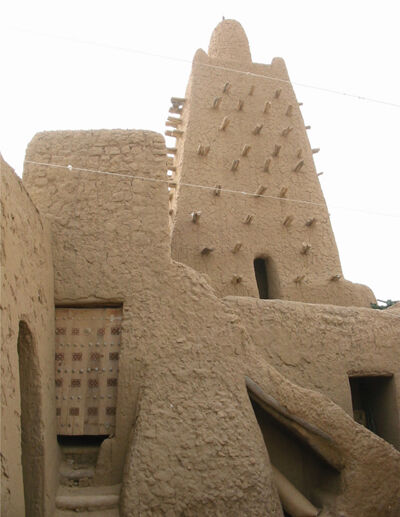
The Djingareiber mosque, Timbuktu's heritage site.
In the 13th century, the Empire of Mali, or Mandingo Empire, was founded by Soundjata Keita. This ruler's authority extended from Ghana to the ocean on the western side of Africa. The empire's small kingdoms were ruled by chiefs who hunted, captured and sold slaves.
All these chiefs had signed a charter forbidding slavery. The charter also gave all men the right to engage in any economic activity they chose. Gradually, the society of the Mali Empire turned to working the land, trade and war.
Between 1235 and 1255, the Mali Empire set out to conquer new territories. The various successors to power continued to expand the empire. The Mali Empire reached its apogee during the reign of Kanku Musa between 1307 and 1332. After making a pilgrimage to Mecca, Kanku Musa brought back several scholars who spread Islam in Timbuktu and throughout the empire. It was at this time that he commissioned the construction of Timbuktu's first mosque.
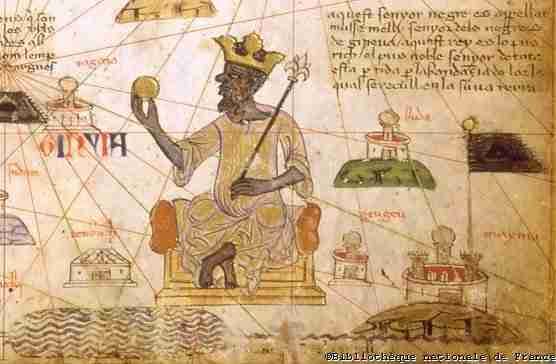
Kanku Musa.
During the reign of Kanku Musa, the territory of the Mali Empire covered a vast area between the Atlantic Ocean, Takedda, the forest zone, the salt zones and the Sahara. All this territory, covering over a million square kilometers at its peak, contributed greatly to the empire's wealth, thanks to the gold and salt mines.
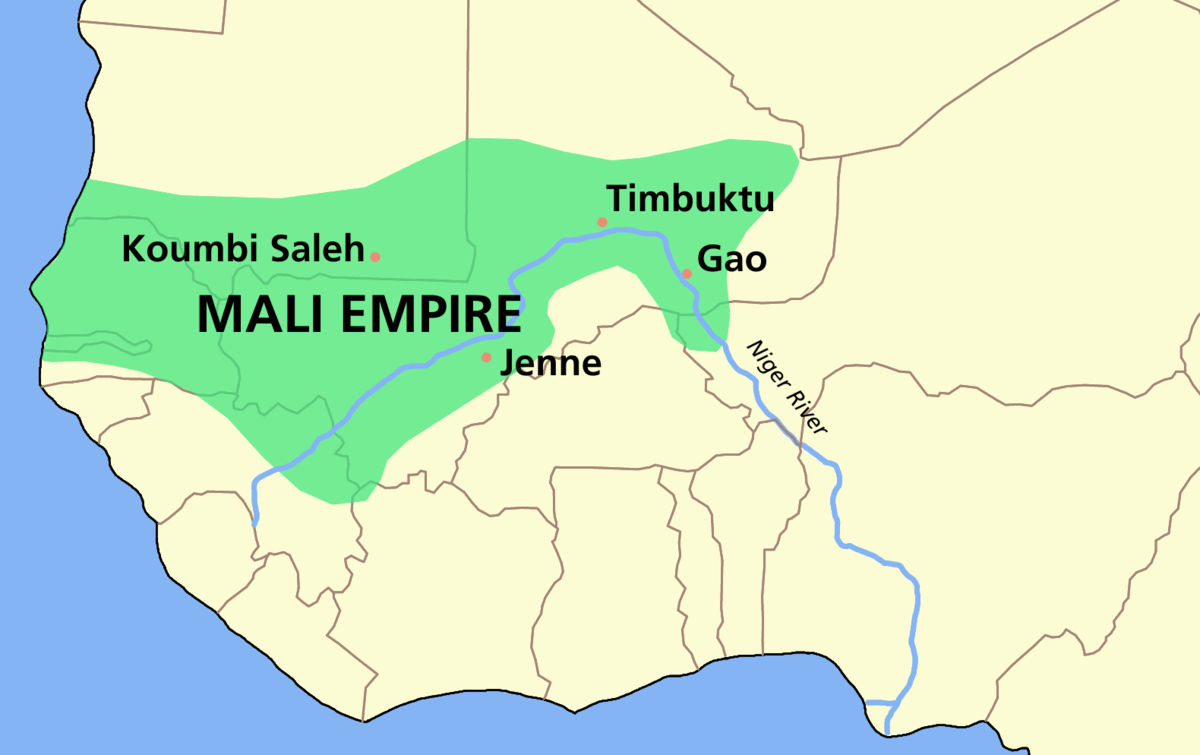
The territory of the Mali Empire.
The main province was Mandé (hence the name Mandingue), where there was an important town called Nyani. This city had an economic district, a fortified royal district, a central village and numerous outlying villages.
The prosperity of the Mali Empire was strong thanks to a variety of economic activities: agriculture, livestock breeding, mining, crafts and trade. Agriculture took advantage of the fertile land irrigated by the Niger River. Crops were varied and selected according to soil type: millet, rice, fonio, cotton. Agricultural produce was complemented by livestock, gathering, fishing and hunting.
Livestock production varied from region to region. In the Sahel and Sahara, people raised camels to transport goods. Throughout the empire, cattle, sheep and goats were also raised. Horse-breeding was reserved for the nobility: it was a prestigious activity that served the cavalry for the expansion and defense of the territory.
Mining was the source of the Mali Empire's reputation for wealth and its capital, Timbuktu. The main mining resources were salt and gold, which were then used as currency. The empire also had a few copper mines. All these mines were heavily guarded. Employees were either free men or slaves.
Craftsmen were grouped according to their specialty. Non-noble groups of craftsmen included blacksmiths, potters, jewelers, shoemakers and others. Craftsmen also worked with leather, wood and ceramics.
An important source of prosperity, trade in the Mali Empire flourished both within the empire and in imports and exports.
Internal trade ensured the distribution of products from agriculture, gathering, animal husbandry, fishing and handicrafts. Smoked fish and fabrics were important domestic commodities. Safe roads ensured the free flow of products, both north-south and east-west. The main trade route, however, remained the Niger River. Road security was ensured by a well-organized army, while transport was supervised by specialized groups.
Traders exported their goods to the Mediterranean basin. They exported ivory, ostrich feathers, kola nuts, cotton, slaves and handicrafts. From the north, the Mali Empire imported salt, manufactured goods (fabrics, jewelry, weapons, armor, copper, ceramics, books) and luxury goods for its wealthy clientele.
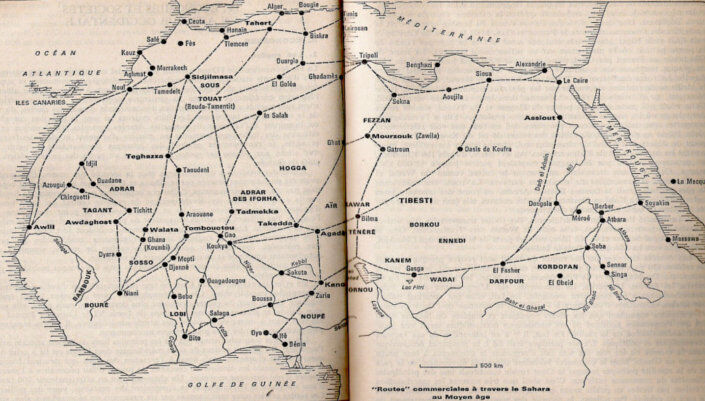
African trade routes in the Middle Ages.
Note : An image in English is coming soon.
The society of the Mali Empire was highly hierarchical, with social classes divided according to their role and importance. At the top of the hierarchy were the horons (nobles). They were followed by the masters of the word and the craftsmen, themselves divided into sub-groups: blacksmiths, cotton-makers. At the bottom of the social pyramid were slaves and serfs.
Power was held by the emperor and his ministers. The latter were assisted by governors who managed part of the territory. Religious power was unquestionable. Magical qualities were attributed to the emperor. He was associated with all the great religious cults of the empire and was responsible for the serenity of the kingdom.
Political power was secular. All religions lived side by side. Moreover, the presence of several religions led to the establishment of a dual judicial system based on religion. The army was also divided into two corps: one in the north of the empire and another in the south. Both had infantry and cavalry sections. All warriors were trained physically and morally by initiation societies or hunters' associations.
After the death of Kanku Musa, the Mali Empire experienced periods of political instability: insubordination, succession problems, theft of the imperial treasury, revolts, etc. At the same time, external threats loomed ever larger over the Manding Empire. At the same time, the Mandingo Empire was increasingly threatened from outside. Little by little, the territory of the Mali Empire shrank. After the Mossi (1333) and Touareg (1430) conquests, the Songhai Empire took possession of the territory.
The Songhai kingdom was founded towards the end of the 6th century. The capital, Kukya, became the city of Gao in 1010.
The kingdom grew rich thanks to the passage of caravans, enjoying the same geographical advantages as the Empire of Mali. The kingdom's growth was considerably slowed by the growing prosperity of the Mali Empire. Indeed, the Songhaï kingdom was subjugated by the Mandingues in the early 14th century.
Songhai independence was won in 1375 by the Sonni dynasty. The warrior ruler Ali Ber embarked on a vast territorial conquest. However, Ali Ber did not favor the activities of Timbuktu's merchants and scholars. That's why the dynasty was dethroned by the Askia family, who took control. It was during the reign of Mohammed Askia, between 1493 and 1529, that the Songhai Empire reached its apogee.
In 1492, the Songhai Empire took control of the city of Timbuktu, securing the region's main sources of wealth. The Songhai now controlled all the trade routes. Shortly afterwards, Mohammed Askia acceded to the throne and extended his power.
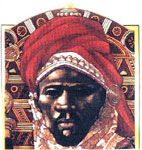
Mohammed Askia.
Mohammed Askia extended his power mainly by creating a tax system, a trade army and a navy. The Askias based their power on Islam. The empire's prosperity depended on trans-Saharan trade routes and Timbuktu's gold and salt.
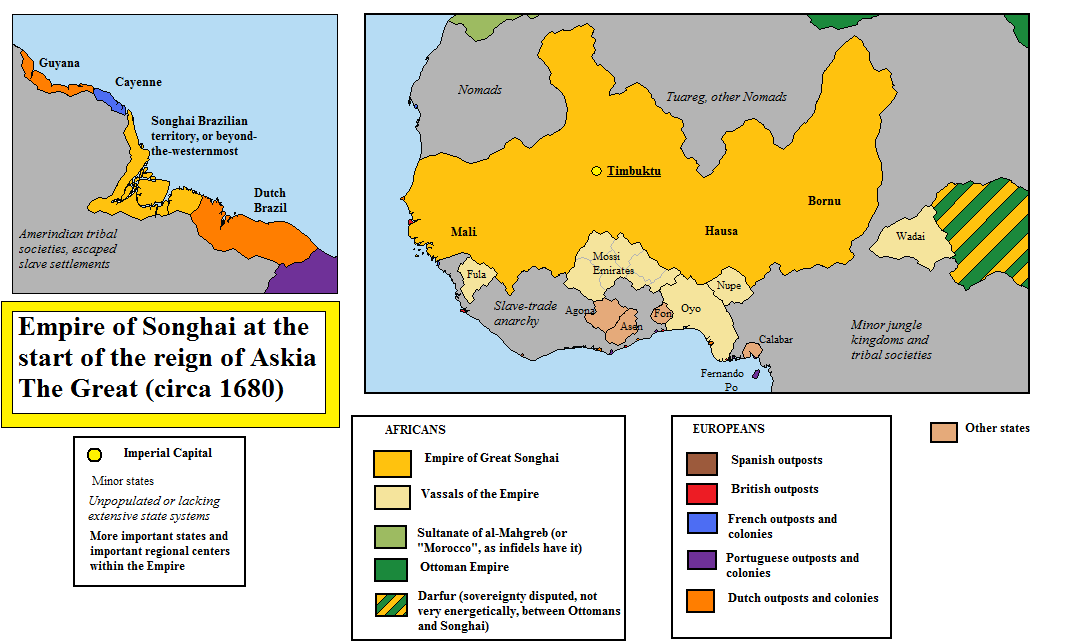
Map of the Songhai Empire at its peak.
After Mohammed Askia's death, there were huge succession problems which led to internal struggles. These struggles had considerably weakened the empire by the time it was overrun by Moroccan troops. It was in 1591 that the Moroccan invaders took control of Timbuktu and Gao. The capture of these two cities, symbols of wealth and prosperity, marked the fall and end of the Songhai Empire.
